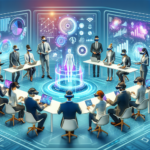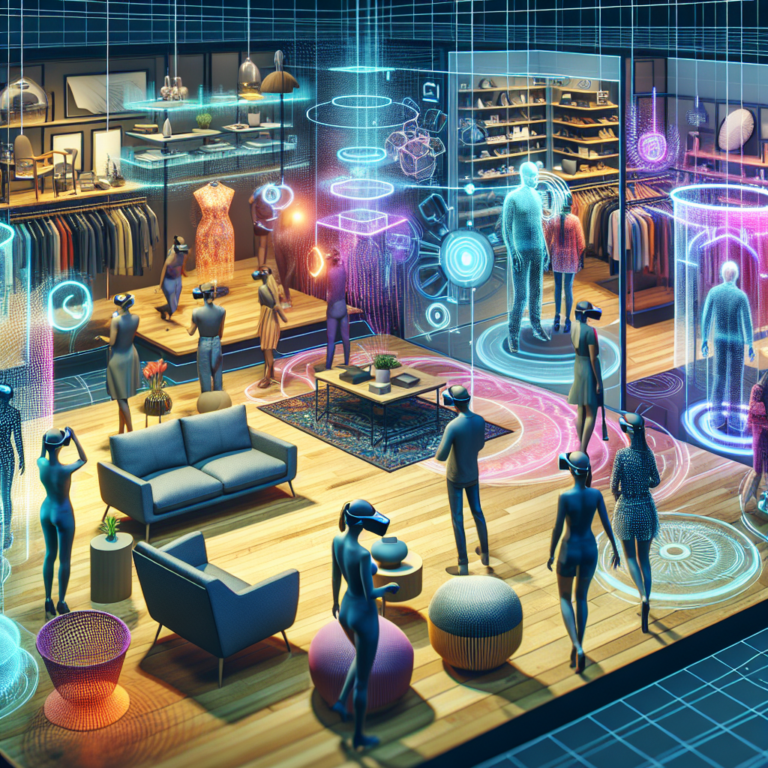The Revolutionary Influence of Immersive Technologies on Retail Product Development 🛍️
Introduction to the Future of Retail
The retail landscape has witnessed an unparalleled transformation in recent years, predominantly driven by the advent of immersive technologies. These innovations—such as augmented reality (AR), virtual reality (VR), and mixed reality (MR)—are redefining how retailers create and present products. The integration of these cutting-edge technologies into product development processes is not just a passing trend; it’s becoming a vital part of the strategy for brands aiming to thrive in today’s digital marketplace.
Understanding Immersive Technologies
Before diving into the impact on retail product development, it’s essential to grasp what immersive technologies entail:
- Augmented Reality (AR): Enhances the real world by overlaying digital information onto it, allowing consumers to visualize products in their own space.
- Virtual Reality (VR): Immerses users fully in a digital environment, often used for product testing or experiential simulations.
- Mixed Reality (MR): Combines elements of AR and VR, enabling interaction between real and virtual objects, thus providing a more interactive user experience.
Enhancing Product Development with AR/VR
1. Streamlining Design Processes
Using immersive technologies like VR, designers can simulate products before they are physically created. This ability allows teams to:
- Explore multiple design iterations quickly.
- Identify potential flaws and make adjustments in real-time.
- Collaborate remotely with stakeholders, increasing efficiency and creativity.
2. Creating Engaging Prototypes
Immersive technologies enable brands to create lifelike prototypes using AR and VR. This innovation opens a world of possibilities for retail product developers:
- Consumers can interact with products virtually, providing valuable feedback.
- Demonstrating the usage of products in real-life settings boosts consumer confidence.
- Brands can gather insights on customer preferences to refine product features.
Transforming Consumer Experience
1. Visualizing Products Better
The shift from traditional product displays to immersive experiences is monumental. With AR applications, customers can:
- Visualize how a piece of furniture would look in their home before making a purchase.
- Try on clothes virtually using fitting rooms equipped with AR technology.
- Access detailed information about products through interactive elements.
2. Boosting Customer Engagement
Retailers are leveraging immersive experiences to create a more engaging shopping journey. Immersive technologies encourage customers to:
- Spend more time exploring products.
- Return for new experiences, enhancing brand loyalty.
- Participate in interactive marketing campaigns that blur the lines between shopping and entertainment.
Data-Driven Insights from Immersive Technologies
Data collection in retail is critical, and immersive technologies offer enhanced opportunities to gather consumer data. Businesses can track:
- How users interact with virtual products, providing insights into preferences.
- The duration of engagement, signifying customer interest.
- Feedback in real-time, shaping future product iterations and marketing strategies.
Immersive Technologies: A Competitive Advantage
Leveraging immersive technologies is not just about keeping up with trends; it’s about gaining a competitive edge. Here’s why immersion matters:
- It aligns product development with changing consumer expectations in a digital-first world.
- Creates memorable experiences that stand out in a saturated market.
- Encourages innovation, pushing companies to explore uncharted territories in product features and design.
The Future of Immersive Technologies in Retail
The future of retail product development is bright, with immersive technologies leading the charge. How brands respond to shifting consumer behaviors will determine their success in this evolving landscape.
1. Increased Adoption Across Sectors
As the technology becomes more accessible, we can expect broad adoption across various retail sectors. From fashion to home goods, incorporating immersive experiences will redefine the shopping ecosystem.
2. Enhanced Personalization
With data technology continuously advancing, brands will use insights gained from immersive technologies to offer highly personalized experiences, creating tailored products that meet the unique needs of the consumer.
Conclusion: Shaping the Retail Future
The integration of immersive technologies in retail product development is not just about adding a shiny new object for audience engagement; it’s about revolutionizing how brands think, create, and connect with their consumers. Retailers who embrace this transformative shift will not only enhance product development efficiency but also establish a deeper connection with their audience, setting the stage for sustained growth and success in the future.




0 Comments